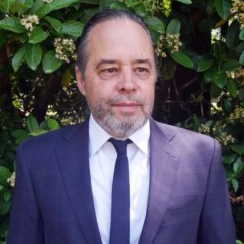World War, Art, and Memory: 1914 to 1945
A special issue of Arts (ISSN 2076-0752).
Deadline for manuscript submissions: closed (31 December 2019) | Viewed by 48466
Special Issue Editor
Interests: modern Russia, especially the late-imperial period; art and war, including the Great Patriotic War of 1812 and World War I; modern France
Special Issues, Collections and Topics in MDPI journals
Special Issue Information
Dear Colleagues,
The two world wars of the first half of the twentieth century, World War I (1914–1918) and World War II (1939–1945), wrought extraordinary levels of destruction. Some of the artistic production during the period reflected grim and complicated realities, while a number of works of art of the post-war period played a role in the memorialization of the wars or served as critical commentary on the wars’ historical legacies. We are calling for article proposals that explore how art expressed the collective experience and memory of these two monumentally important global conflagrations and of conflicts that occurred in the interwar years.
We seek articles that would address the ways in which individuals, groups, and nations employed art to shape the collective memory and remembrance of these profoundly transformative conflicts. The articles can address all aspects of the visual arts in a variety of forms, including the applied arts and New Media. While the Eastern and Western fronts in Europe will likely receive the most attention, both wars were truly global. Therefore, we welcome proposals that address any national context. In particular, we wish to explore the representation of these aspects of war: the experience of those who directly encountered battle; how imagery affected and connected those on “the home front”; how art formed evolving historical narratives of war; and sites of memory and the memorialization of key people, events, and places.
To propose an article for publication, please send a title and short abstract to the Editor, Andrew Nedd, at anedd@scad.edu, with a copy to arts@mdpi.com by 1 August 2019. Full manuscripts of up to max 15,000 words in length should be submitted by 31 December 2019.
Prof. Dr. Andrew M. Nedd
Guest Editor
Manuscript Submission Information
Manuscripts should be submitted online at www.mdpi.com by registering and logging in to this website. Once you are registered, click here to go to the submission form. Manuscripts can be submitted until the deadline. All submissions that pass pre-check are peer-reviewed. Accepted papers will be published continuously in the journal (as soon as accepted) and will be listed together on the special issue website. Research articles, review articles as well as short communications are invited. For planned papers, a title and short abstract (about 100 words) can be sent to the Editorial Office for announcement on this website.
Submitted manuscripts should not have been published previously, nor be under consideration for publication elsewhere (except conference proceedings papers). All manuscripts are thoroughly refereed through a double-blind peer-review process. A guide for authors and other relevant information for submission of manuscripts is available on the Instructions for Authors page. Arts is an international peer-reviewed open access semimonthly journal published by MDPI.
Please visit the Instructions for Authors page before submitting a manuscript. The Article Processing Charge (APC) for publication in this open access journal is 1400 CHF (Swiss Francs). Submitted papers should be well formatted and use good English. Authors may use MDPI's English editing service prior to publication or during author revisions.
Keywords
- World War I
- World War II
- art
- memory




